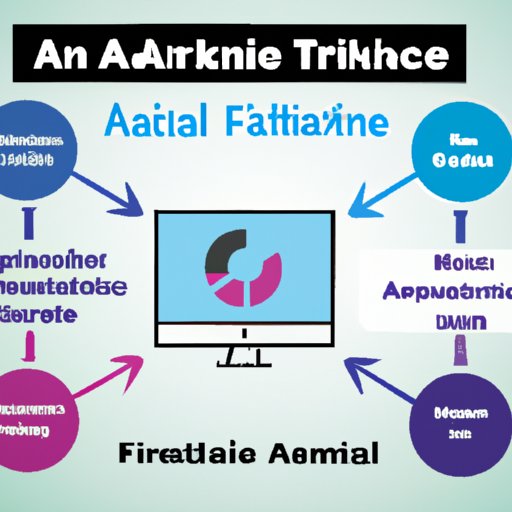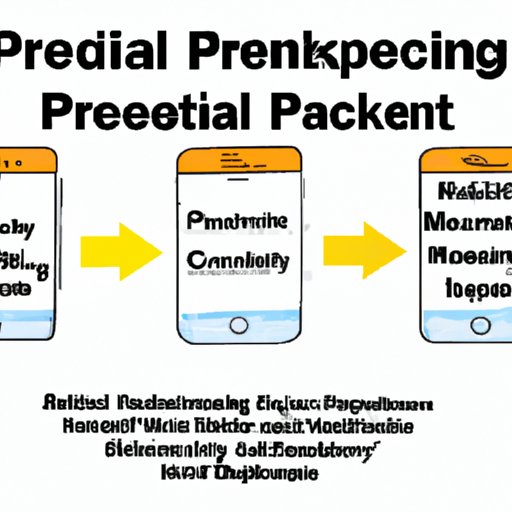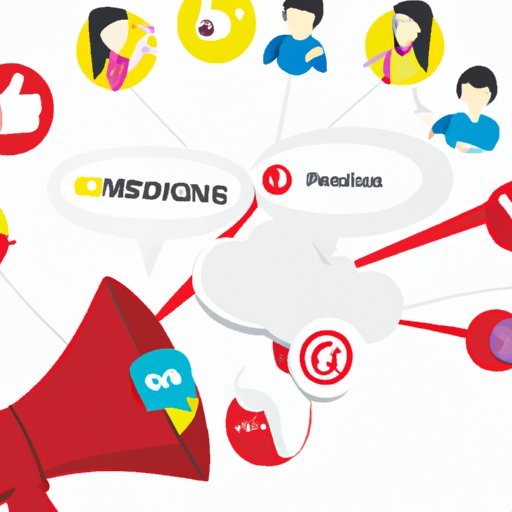Introduction
Affiliate marketing is a popular way of generating income online. It involves promoting products or services from other businesses and earning a commission for each successful sale. Social media can be a powerful tool for affiliate marketers, allowing them to reach a larger audience, engage with potential customers, and even track their performance.

Analyze the Different Social Media Platforms for Affiliate Marketing
There are many different social media networks that can be used for affiliate marketing. Some of the most popular include Facebook, Twitter, Instagram, YouTube, and Pinterest. Each platform has its own unique benefits and drawbacks when it comes to affiliate marketing.
Comparison of Popular Social Media Networks
Facebook is one of the most popular social networks with over 2.6 billion active users. It is a great platform for affiliate marketers because of its wide reach and ability to target specific audiences. Twitter is another popular network, with 330 million monthly active users. It is ideal for sharing short snippets of content and engaging with followers in real-time. Instagram is a highly visual platform with over 1 billion monthly active users. It is perfect for showcasing products and engaging with potential customers. YouTube is the world’s largest video platform, with over 2 billion monthly active users. It’s ideal for creating video content and building a loyal following. Finally, Pinterest is a visual search engine with over 459 million monthly active users. It is great for sharing product images and inspiring potential customers.
Benefits and Downsides of Each Network
Each social media network has its own unique benefits and downsides for affiliate marketers. Facebook offers a wide reach and detailed targeting options, but it can be expensive to advertise. Twitter is great for real-time engagement, but it can be hard to stand out from the crowd. Instagram is highly visual and allows for direct links to products, but it can be difficult to measure performance. YouTube is excellent for creating video content, but it can take time to build an audience. Finally, Pinterest is great for inspiring potential customers, but it can be difficult to track performance.

Tips to Maximize Engagement on Social Media for Affiliate Marketing
Engaging with potential customers on social media is essential for affiliate marketing success. There are several strategies that can be used to increase engagement and attract more people to your affiliate links. First, use visuals to draw attention to your posts, such as photos, videos, GIFs, and infographics. Second, use storytelling techniques to capture your audience’s attention and keep them engaged. Third, create engaging content that encourages people to comment, like, and share. Fourth, use hashtags to make your posts more discoverable. Fifth, ask questions to encourage people to interact with your posts. And finally, respond to comments and messages in a timely manner to show your audience that you care.
Examples of Successful Campaigns
One of the best ways to learn how to maximize engagement on social media is by looking at examples of successful campaigns. For example, Dollar Shave Club created a video campaign that went viral and helped them increase sales by over 6500%. Another example is Airbnb’s “Live There” campaign, which encouraged people to explore new cities and boosted engagement by over 400%. These campaigns show how effective social media can be for affiliate marketing.

Strategies to Track Performance on Social Media Platforms
Tracking performance on social media is essential for measuring the success of your affiliate marketing efforts. The first step is to set up tracking codes on your affiliate links so that you can measure clicks and conversions. You can also use metrics such as engagement rate, reach, and impressions to measure performance. Finally, there are several tools that can help you track performance, such as Google Analytics, Hootsuite, and Sprout Social.
Tools to Measure Success
Google Analytics is a powerful tool for tracking website traffic and conversions. Hootsuite is a social media management platform that allows you to monitor performance and track mentions of your brand. Sprout Social is a social media analytics platform that helps you measure the impact of your campaigns. All of these tools can be used to measure the success of your affiliate marketing efforts.
Growing an Audience on Social Media for Affiliate Marketing
Growing an audience on social media is essential for successful affiliate marketing. One of the best ways to do this is by creating content that resonates with your target audience. You should also focus on building relationships with influencers and other relevant accounts in your niche. Additionally, you can use paid ads to reach a larger audience and boost engagement. Finally, you should use best practices for creating content, such as using high-quality visuals, writing engaging captions, and optimizing your posts for search engines.
Best Practices for Creating Content
Creating quality content is essential for growing an audience on social media. You should always use high-quality visuals, such as photos and videos, to attract attention. You should also write engaging captions that encourage people to take action. Finally, you should optimize your posts for search engines by using keywords and hashtags.
Conclusion
Social media can be a powerful tool for affiliate marketers, allowing them to reach a larger audience, engage with potential customers, and even track their performance. Each social media network has its own unique benefits and downsides, so it’s important to choose the right one for your needs. Additionally, you should use strategies to maximize engagement, track performance, and grow an audience on social media. By following these tips, you will be well on your way to success in affiliate marketing.
(Note: Is this article not meeting your expectations? Do you have knowledge or insights to share? Unlock new opportunities and expand your reach by joining our authors team. Click Registration to join us and share your expertise with our readers.)
